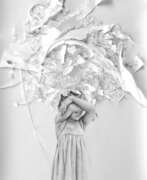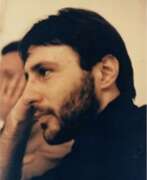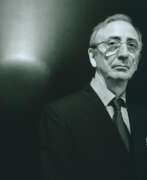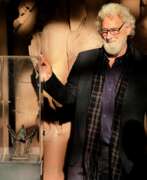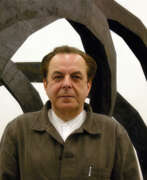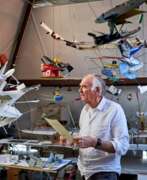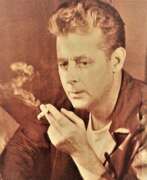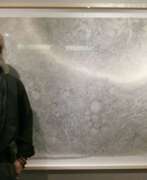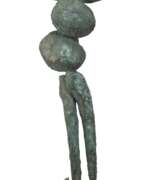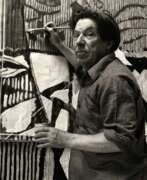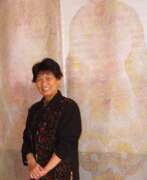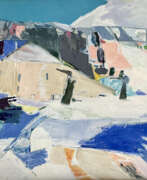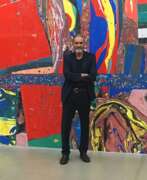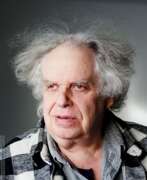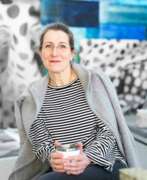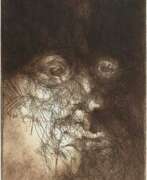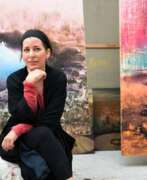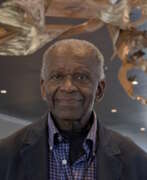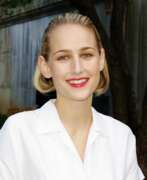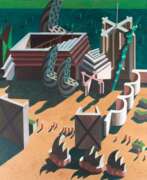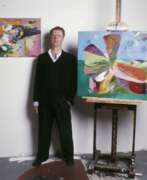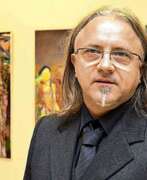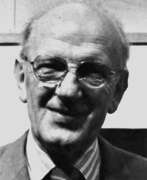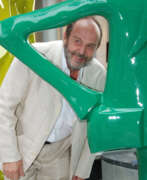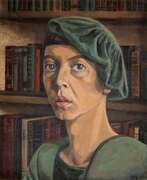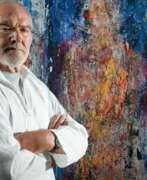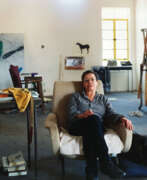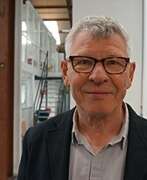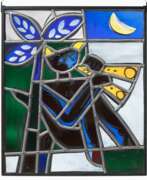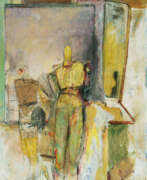Draftsmen Abstract art
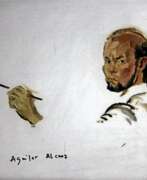

Frederico Aguilar Alcuaz is a Filipino abstract painter, sculptor and ceramist, and master tapestry artist.
He studied painting at the University of the Philippines' School of Fine Arts, then lived and worked both in the Philippines and Spain, and in Brno, Czech Republic, he worked extensively on tapestries.
Alcuaz has earned international acclaim with his vivid abstract works in various genres and techniques, and he has exhibited extensively internationally.
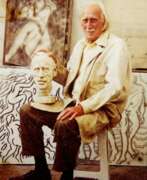

Harold Ambellan is an American painter and sculptor.
He studied sculpture and fine art in Buffalo before moving to New York City. The human figure is central to Harold Ambellan's work. He created monumental figures and drew extensively, leaving thousands of drawings. Ambellan was one of the participants in Roosevelt's Federal Art Project, which hired hundreds of artists during the Great Depression who collectively created more than 100,000 paintings and over 18,000 sculptures.
Ambellan remained committed to figuration in both his sculpture and painting. He was elected president of the Sculptors Guild of America in 1941, and that same year his work was exhibited in group shows at the Metropolitan Museum of Art in New York and the Academy of Fine Arts in Philadelphia.
In 1944, Ambellan participated in the liberation of Normandy as part of the U.S. Navy, then taught three-dimensional art at the Workshop School in New York City. In 1954, for political reasons, Ambellan moved to France and remained there for the rest of his life, working and exhibiting throughout Europe.


Alexander Georg Rudolf Bauer was a German-born painter who was involved in the avant-garde group Der Sturm in Berlin, and whose work would become central to the non-objective art collection of Solomon R. Guggenheim.
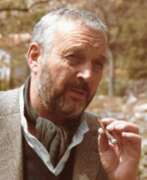

Wolfram Beck was a German sculptor, draughtsman, and painter who worked with wood, steel, bronze, acrylic, and stone. He was trained at the Higher School of Artistic Culture in Berlin, and his work initially included large organic wooden works, portrait busts, and torsos in clay and stone. In the 1970s, Beck created strictly geometric and airy-filigree constructions from mechanical and electronic components that could be moved by actuators or by hand. He also created colorfully accented and fragile looking objects in metal and acrylic. Beck's work can be found in the collections of Axel Springer, Egon Eiermann, and others.
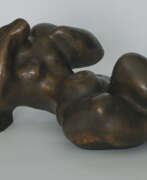

Curt Beckmann is a German painter and sculptor.
He studied at the Düsseldorf State Academy of Art, was a member of the Rhine Secession, Das Junge Rheinland, was a member of the Malkasten Association of Artists, the Association of West German Artists and the Association of German Artists.
Beckmann's work is distinguished by the contemplative quality of the female nude bodies. He gradually moved from naturalistic figures to an almost abstract expressionist representation of them.
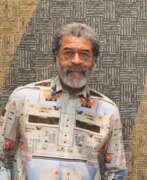

McArthur Binion is an American artist based in Chicago, Illinois.
McArthur Binion's work primarily consists of minimalist abstract paintings, created using crayons, oil stick, and ink, often on rigid surfaces such as wood or aluminum. For many years, Binion has been incorporating laser-prints as a collaged ground on top of which he applies other mediums.
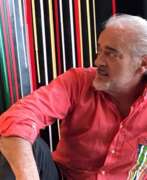

Giuseppe Fortunato is a versatile Italian artist, sculptor, designer, and draftsman. At the end of the 1980s he created, together with other artists, the Images movement. Fortunato's famous paintings were created in the technique of collage with enamel on canvas, and elements of surrealism and metaphysical painting can be traced in his work.


Mariann Grunder, or Susie Mariann Grunder, was a Swiss artist and sculptor. She created large wall reliefs with concrete elements. And her stone sculptures, which often deal with literary or mythological themes, combine elements of surrealism, abstraction and minimalism. Grunder has also done numerous drawings and prints.
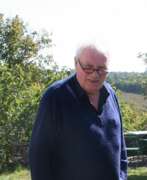

Rolf Iseli is a Swiss avant-garde artist living and working in Bern.
At the beginning of his artistic career, Iseli was a radical representative of Taschism and the Informel movement, and also painted in gesture technique. During his long life he has worked in different fields: painting, collage, drawing, lithography, drawing, plastic art, sculpture and art in architecture. Rolf Iseli is one of the most important representatives of the Swiss artistic avant-garde of the second half of the 20th century.
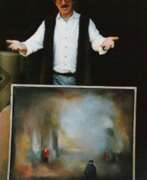

Werner Lichtner-Aix was a German painter, graphic artist, sculptor, and graphic designer.
Inspired by the idea of community and the close connection between man and nature, the artist painted exhilarating landscape paintings using a variety of techniques. He created many works of art, including oil, watercolor and gouache paintings, collages and sculptures.
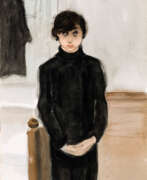

Jeanne Mammen was a twentieth-century German artist. She is known as a graphic artist and draftsman, a representative of modernism, a prominent figure in the artistic life of the Weimar Republic.
Jeanne Mammen developed an artistic style close to the New Materialism school. As she grew older, her work became more symbolic; after 1945, the artist moved towards abstractionism. She worked for fashion magazines, created movie posters, and illustrated erotic poetry. Mammen actively developed collage techniques, as well as creating portraits and caricatures, and sketching street types.
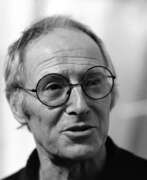

Lei Molin or Leopold Hubertus Molin was a Dutch painter, draftsman, engraver, and sculptor.
He was educated at the School of Applied Arts in Maastricht and at the Académie Julian in Paris. In the early period Molin worked in the style of Impressionism. Later, while living in North Holland, he joined the so-called Amsterdam Limburgers.
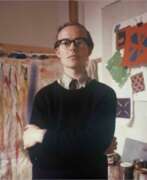

John Jeremy Kenrick Moon is a British abstraction artist and sculptor. He originally studied law and worked in advertising, and as an artist was largely self-taught. Moon is best known for his large-scale geometric paintings as well as his sculptures.
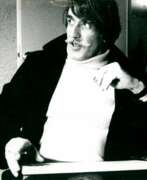

Magdalo Mussio is an Italian artist, animator, editor and writer.
In painting he created abstract landscapes and participated in many exhibitions in Italy. In the 1960s he worked as an editor for several Italian cultural publications. Mussio was also the creative artist of a number of animated films and published several books about his work.
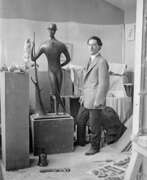

Elie Nadelman is a Polish-born American expressionist sculptor. He is best known for his abstract figures and portraits done in a contemporary style. Nadelman began his career as a wood and metal carver in Warsaw before moving to the United States in 1904. He studied in New York and Paris, where he was introduced to the work of Pablo Picasso and André Derain.
His artistic inspiration was also strongly associated with African art. In his sculptures, Nadelman sought a synthesis of Cubism and primitive art. He often used geometric forms to create abstract compositions that at the same time preserved the human figure. His work has been recognized in many exhibitions, including the Venice Biennale and Documenta in Kassel.
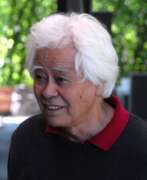

Osamu Nakajima is a Japanese-Austrian sculptor of Asian modern and contemporary art. He is one of the first artists who were able to realize pure abstraction for sculptures in public space. His monochrome stone sculptures are based on basic geometric forms and rational principles of order, which, however, find new and unusual solutions.
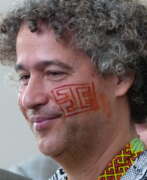

Ernesto Saboia de Albuquerque Neto is a contemporary visual artist. Ernesto Neto began exhibiting in Scotland in 1988 and has had solo exhibitions abroad since 1995. Neto's work has been described as "beyond abstract minimalism". His installations are large, soft, biomorphic sculptures that fill an exhibition space that viewers can touch, poke, and walk on or through. They are made of white, stretchy material—amorphous forms stuffed with Styrofoam pellets or, on occasion, aromatic spices. In some installations, he has also used this material to create translucent scrims that transform the space's walls and floor. His sculptures can be regarded as expression of traditional abstract form, but in their interaction with the viewer, they work on another level as well.
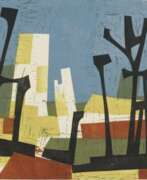

Hermann Ober was a German abstractionist painter and graphic designer.
During World War II he produced many landscape sketches and watercolors of battlefields, then studied at the Academy of Fine Arts in Munich.
Besides painting in the abstract style, Hermann Ober experimented for many years with materials and forms and developed his own relief printing technique. In 1951 he was one of the founders of the Salzburg Group.
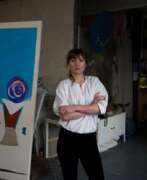

Lea Asja Pagenkemper is a German artist who works in a variety of techniques. In her watercolor abstract creations she uses bright colors, for her color is the connection of the physical and metaphysical world. The artist also organizes text into creations consisting of visually legible structures, and the means of expression is not a pictorial motif, but the word. These structures and arrangements are drawn in pencil on a blank, unprimed canvas, or in white chalk on wooden panels painted with black lacquer.


Hubert Scheibl is an Austrian painter, draughtsman, and photographer, one of the most important Austrian representatives of abstract painting.
Hubert Scheibl studied with Arnulf Rainer at the Academy of Fine Arts in Vienna, lived in New York for several years, which influenced his work. In the 1980s he was a member of the Neue Wilden group.


Sandra Schlipkoeter is a German artist, painter and sculptor known for her vibrant, dynamic works with waves of paint.
Schlipkoeter plays with the theme of interference - waves of light, radio or acoustic waves overlap each other, creating the next wave.
Sandra Schlipkoeter's work has been exhibited at national exhibitions as well as in the Netherlands, Italy and the USA.


Terry Winters is an American painter, draughtsman, and printmaker whose nuanced approach to the process of painting has addressed evolving concepts of spatiality and expanded the concerns of abstract art. His attention to the process of painting and investigations into systems and spatial fields explores both non-narrative abstraction and the physicality of modernism. In Winters’ work, abstract processes give way to forms with real word agency that recall mathematical concepts and cybernetics, as well as natural and scientific worlds.
